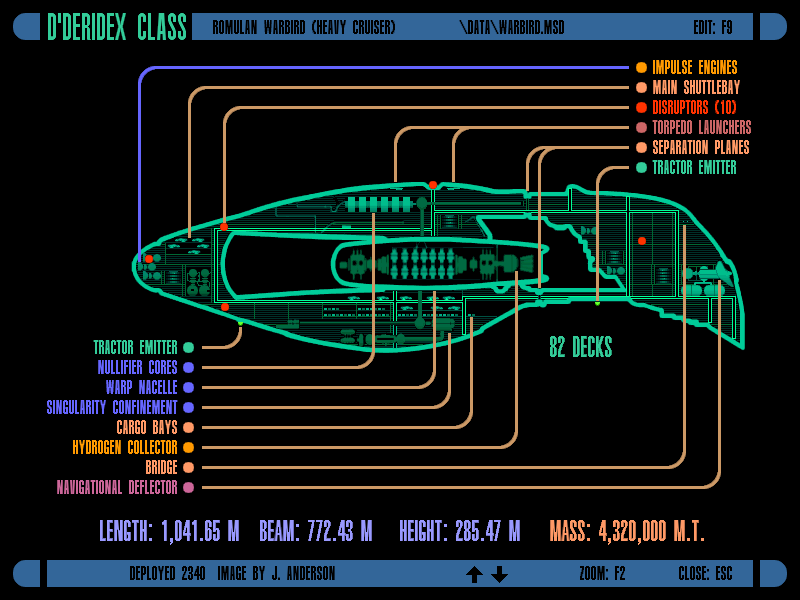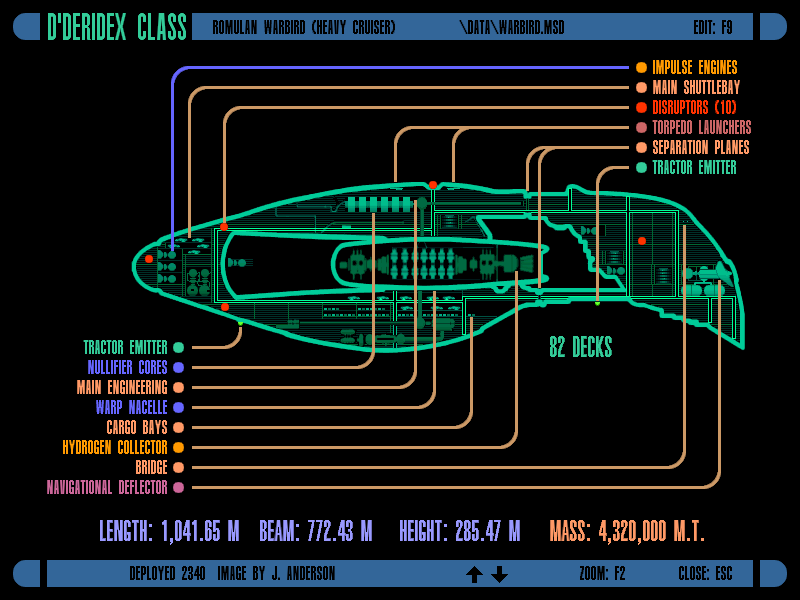Not sure if that justifies the effort Probert went into in giving his paired warp engines completely unobstructed view of each other... And we still have TOS and TOS movie precedent for designs that don't have line-of-sight, or don't have nacelled engines at all...
There was really no effort involved. I was simply trying to establish technological guidelines for design continuity because I personally work better and with more consistency when they are established. If my successors chose to acknowledge the guidelines, good for them (for the sake of continuity), if not, that's their prerogative. Obviously, my guidelines are not retroactive, so all designs prior to TMP stand on their own. Still, I'm guessing there are more line-of-site engine pairs than not.
And on the subject of misinterpreted ship body-parts,... as a designer, it's my job to establish a ship & it's components as completely and logically (and consistently) as possible. Hollywood loves to brag about how film-making is a collaborative business, yet no one collaborates with us designers once the designs leave our desk/computer. When people ask about various parts & their functions, on ships I've designed, I tell them what those parts are,
as designed. How they're actually portrayed is beyond my control... beyond my ability to 'collaborate'. Instead of using the intended twin disruptors in the 'head' of the Warbird, for example, some uninformed SFX guy shoots 'rays' out of the Navigational Deflector... not unlike using the Klingon Battlecruiser's Deflector to launch torpedoes.
If an Aborigine from some unexplored deep jungle wanders into today's society and uses a hammer, for instance, to break open coconuts, that doesn't automatically make it a coconut-breaker... trumping design intent. It merely means it was used
differently than intended.
Still, the point is valid that if the Aborigine ran back home and showed his village the new 'coconut-breaker', that is what it would be...
to them. And that's okay.
For what it's worth,
Andrew-

 While I've never liked the idea of the warbird being monstrously huge in comparison to the Galaxy or other Federation ships, it's always been one of my favorites. I wish we'd gotten to see them used more as they were in eps like "The Enemy" and "The Defector."
While I've never liked the idea of the warbird being monstrously huge in comparison to the Galaxy or other Federation ships, it's always been one of my favorites. I wish we'd gotten to see them used more as they were in eps like "The Enemy" and "The Defector."



